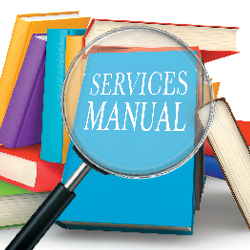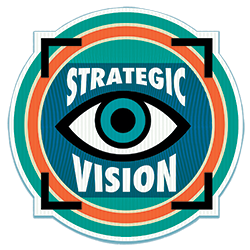|
Help!

SYSTEM EXHIBITS
 We've always used a custom exhibit, but management is pushing us to use a system for our new build. What exactly is a system exhibit, and what are its main benefits? We've always used a custom exhibit, but management is pushing us to use a system for our new build. What exactly is a system exhibit, and what are its main benefits?
 Debuting in the early 1970s, system exhibits comprise interchangeable components that can be combined to create various exhibit elements. Most systems employ a lightweight framework (aluminum, PVC, etc.) that can be connected to form a wide variety of configurations. While some systems require tools for assembly, others snap, attach, or lock together without the need for tools. Once assembled, framing systems are then clad with everything from rigid graphics to tensioned-fabric panels.
Debuting in the early 1970s, system exhibits comprise interchangeable components that can be combined to create various exhibit elements. Most systems employ a lightweight framework (aluminum, PVC, etc.) that can be connected to form a wide variety of configurations. While some systems require tools for assembly, others snap, attach, or lock together without the need for tools. Once assembled, framing systems are then clad with everything from rigid graphics to tensioned-fabric panels.
Given their composition, then, system exhibits offer numerous benefits over traditional custom exhibitry, including everything from decreased weight to the ability to interchange and reconfigure the components.
Here, then, is a brief rundown of some of the key benefits system exhibits have to offer. Certainly custom exhibitry has its place – and a lengthy list of attributes to boot. But considering the myriad benefits system exhibits provide, you're wise to at least consider them among your purchasing options.
Reconfigurability – The erector-set construction of most systems means the frames can be used to form a variety of components, which can be easily added, removed, and repositioned to suit your exhibiting needs. While a custom exhibit might have rigid structures that must fit together in a certain layout, systems can give you much more freedom to change your configuration to fit just about any size booth space.
 Minimal Weight – Since systems are inherently built of lightweight materials, they're usually considerably lighter than their custom counterparts. Plus, custom exhibits are often packed in traditional wooden crates; whereas, systems typically come with rugged shipping containers constructed to house specific components tightly and securely. The difference in the type of shipping containers often means that system exhibits also have lighter-weight containers, further decreasing its weight. In the end, this equates to lower shipping and drayage charges, and sometimes, the less-bulky shipping containers mean your exhibit will take up less storage space in a warehouse. Minimal Weight – Since systems are inherently built of lightweight materials, they're usually considerably lighter than their custom counterparts. Plus, custom exhibits are often packed in traditional wooden crates; whereas, systems typically come with rugged shipping containers constructed to house specific components tightly and securely. The difference in the type of shipping containers often means that system exhibits also have lighter-weight containers, further decreasing its weight. In the end, this equates to lower shipping and drayage charges, and sometimes, the less-bulky shipping containers mean your exhibit will take up less storage space in a warehouse.
 Limited Labor – Most custom displays need significant installation-and-dismantle labor due to the complexity of the design and the lack of standardized connectors. What's more, if your exhibit requires a tool to construct it, chances are you're going to have to use union labor in most venues even for the simplest 10-by-10. Systems, on the other hand, usually require fewer labor hours – equating to lower labor bills – because the parts and pieces can be quickly connected and disconnected. Some systems require no tools for assembly, which means you might even be able to set up small exhibits yourself and eliminate labor altogether. Limited Labor – Most custom displays need significant installation-and-dismantle labor due to the complexity of the design and the lack of standardized connectors. What's more, if your exhibit requires a tool to construct it, chances are you're going to have to use union labor in most venues even for the simplest 10-by-10. Systems, on the other hand, usually require fewer labor hours – equating to lower labor bills – because the parts and pieces can be quickly connected and disconnected. Some systems require no tools for assembly, which means you might even be able to set up small exhibits yourself and eliminate labor altogether.
 Interchangeability – More often than not, system manufacturers sell their products through a network of authorized representatives, dealers, and resellers. That means you can often purchase the same components or replacement pieces in various locations across the globe. With a custom exhibit, securing a new back wall or side panel could involve building a new piece from scratch and shipping it across the country. If you damage a similar system component, your exhibit house can usually simply call a dealer close to the convention facility and have the component delivered. Plus, if you exhibit internationally, you could potentially rent the same exact components you're used to in the United States from an overseas reseller and maintain the aesthetic of your U.S. property without incurring exorbitant shipping fees. Interchangeability – More often than not, system manufacturers sell their products through a network of authorized representatives, dealers, and resellers. That means you can often purchase the same components or replacement pieces in various locations across the globe. With a custom exhibit, securing a new back wall or side panel could involve building a new piece from scratch and shipping it across the country. If you damage a similar system component, your exhibit house can usually simply call a dealer close to the convention facility and have the component delivered. Plus, if you exhibit internationally, you could potentially rent the same exact components you're used to in the United States from an overseas reseller and maintain the aesthetic of your U.S. property without incurring exorbitant shipping fees.
 Hybrid Alternative – For various reasons, some exhibitors never fully make the change to system exhibits. However, they might opt to pepper their custom structures with system elements for larger shows or simply augment them with lightweight, easily repositioned components on a regular basis. Most providers certainly sell system exhibits, but they often also offer them as rentals. Thus, you can easily integrate a system piece here or a component there without having to actually purchase and store the elements, and without dramatically changing the look and feel of your custom property. Hybrid Alternative – For various reasons, some exhibitors never fully make the change to system exhibits. However, they might opt to pepper their custom structures with system elements for larger shows or simply augment them with lightweight, easily repositioned components on a regular basis. Most providers certainly sell system exhibits, but they often also offer them as rentals. Thus, you can easily integrate a system piece here or a component there without having to actually purchase and store the elements, and without dramatically changing the look and feel of your custom property.
 Suitable for Accessories – While custom exhibits can be designed to house accessories such as monitors and lighting, systems are often capable of accommodating a multitude of accessories simply by adding or changing attached hardware or components. For example, if you want to add a monitor to an existing design, you can usually ask your exhibit house to switch out a few structural components to accommodate it, as opposed to having to rebuild and reengineer the wall. System-exhibit accessories can include everything from lockable storage cabinets and backlit and large-format graphics to canopies, multimedia monitors, lighting, headers, and more. Suitable for Accessories – While custom exhibits can be designed to house accessories such as monitors and lighting, systems are often capable of accommodating a multitude of accessories simply by adding or changing attached hardware or components. For example, if you want to add a monitor to an existing design, you can usually ask your exhibit house to switch out a few structural components to accommodate it, as opposed to having to rebuild and reengineer the wall. System-exhibit accessories can include everything from lockable storage cabinets and backlit and large-format graphics to canopies, multimedia monitors, lighting, headers, and more.
 Recyclability/Reuseability – Times are changing, but the majority of custom exhibits aren't designed with Mother Nature in mind. Granted, Green construction methods and materials are available, and some exhibit houses recycle clients' old components for reuse in other exhibits or to serve in their rental inventories. Systems, however, are inherently Greener because many of them use aluminum frames, which can be easily recycled. And since the components can be interchanged and reconfigured, the lifespan of a system exhibit is generally much longer than that of a similar custom booth. Recyclability/Reuseability – Times are changing, but the majority of custom exhibits aren't designed with Mother Nature in mind. Granted, Green construction methods and materials are available, and some exhibit houses recycle clients' old components for reuse in other exhibits or to serve in their rental inventories. Systems, however, are inherently Greener because many of them use aluminum frames, which can be easily recycled. And since the components can be interchanged and reconfigured, the lifespan of a system exhibit is generally much longer than that of a similar custom booth.
Granted, custom exhibits typically offer a one-off look that few systems can touch, and the range of materials, layouts, and accoutrements is almost endless. But as you can see, system exhibits certainly have their strong points as well, and they are usually a viable option for almost any exhibit program.
— Jay Burkette, vice president of sales, ExpoDisplays, Birmingham, AL
|




 We've always used a custom exhibit, but management is pushing us to use a system for our new build. What exactly is a system exhibit, and what are its main benefits?
We've always used a custom exhibit, but management is pushing us to use a system for our new build. What exactly is a system exhibit, and what are its main benefits? Debuting in the early 1970s, system exhibits comprise interchangeable components that can be combined to create various exhibit elements. Most systems employ a lightweight framework (aluminum, PVC, etc.) that can be connected to form a wide variety of configurations. While some systems require tools for assembly, others snap, attach, or lock together without the need for tools. Once assembled, framing systems are then clad with everything from rigid graphics to tensioned-fabric panels.
Debuting in the early 1970s, system exhibits comprise interchangeable components that can be combined to create various exhibit elements. Most systems employ a lightweight framework (aluminum, PVC, etc.) that can be connected to form a wide variety of configurations. While some systems require tools for assembly, others snap, attach, or lock together without the need for tools. Once assembled, framing systems are then clad with everything from rigid graphics to tensioned-fabric panels.


